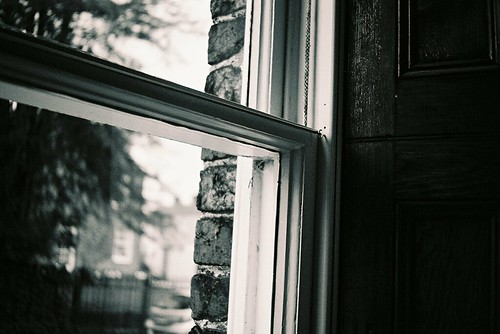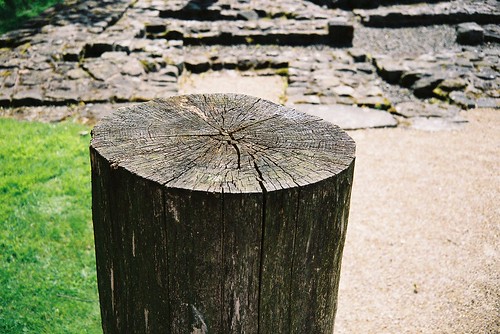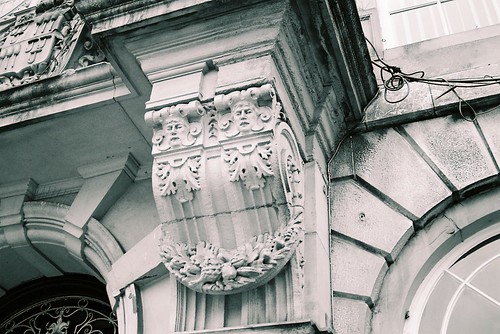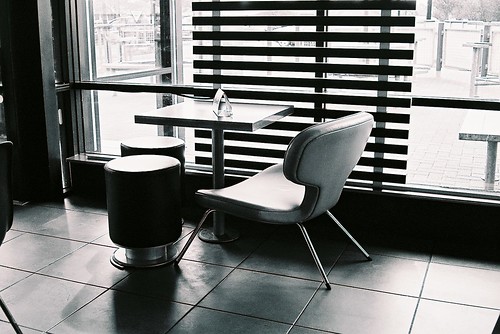
The 1970’s were the heyday of the fixed lens compact rangefinder. Truth be told there can be little to pick from these beauties with the Konica C35 series leading the pack. The Ricoh 500RF and its posher brother the 500G manage to stand out from the crowd as they offer some of the best user control of exposure in the class.
Whereas Konica C35 and it’s wannabes used full automatic exposure, the Ricohs offer either shutter priority or full manual (with metering) in the same compact. they weren’t the first to do this, the Olympus 35RC is a good earlier example, but they offer it in a much more compact package.

Ricoh 500RF Specs
- Lens: Rickenon 40mm 1:2.8
- Focus: Rangefinder
- Metering: CdS
- Aperture: f/2.8-f/16
- ASA range : 25-800
- Shutter: 1/8-1/500 + B
- EV 100asa: 6-17+
- Filter-Thread: 46mm
- Battery : PX675
The core specs out with exposure are pretty class standard. The All the expected accoutrements are there (timer, cable release and industry standard 46mm filter thread). The fastest shutter speed is a bit slower at 1/500 sec compared to the usual 1/650 sec but makes more sense with the exposure system. Oddly 1/15 and 1/8 are on offer but I suppose it can be tripod mounted with self timer or cable release.

40mm 1:2.8 lens is good and sharp and runs a close second to the razor sharp C35 IMHO. The diamond shaped focus spot in viewfinder is a tad small which is my only issue.

The exposure system is what sets this apart. Set the aperture ring to A and you lock it into shutter priority mode selecting the speed on the second dial. A needle meter in the shows aperture and as ever you can lock this by half depressing shutter. This pretty flexible but if you are a total control junkie knock it off A and you can set the aperture as well. A large M shows in the viewfinder to warn you you’re in manual but the metering still works.

For night photography junkies this system allows for aperture control in Bulb setting (most compact rangefinder of the era did offer bulb but only at widest aperture). The camera obviously sets flash by f-stop rather than GN. The camera meets my EV17 rule allowing films up to 400asa to be used in most conditions. The camera actually supports 800asa for metering but you’ll need to shoot that in less optimal conditions as the Max 1/500 & f/16 means that it will over expose in sunny conditions.
I really like this camera and it does just have that little edge in flexibility versus the rest in it’s class. The 500RF and 500G are basically the same camera except the 500RF has more plastic as far as I know. The camera was also sold as the Sears 35RF in the US. This creates a slightly less smooth appearance compared to its rivals

They are less common than others and usually can be found for cost between the C35 and its wannabes like the Chinon 35ee. Light seals will need replacing but this is pretty easy. The metering requires the now defunct px675 mercury cell but cheap zinc air hearing aid batteries like the 675za work well enough (you can get 4 in Poundland for a quid)
Alternatives
- Konica C35 series – The classic benchmark compact rangefinder
- FED Mikron 2 – Soviet take on 1970’s rangefinders
- Chinon 35EE – Cheap as chips compact rangefinder
- Olympus 35 RC – Classic shutter priority compact rangefinder
Helpful links
- Ricoh 500RF page at Camera-wiki
- Ricoh 500RF Manual at Mike Butkus’s site
- Ricoh 500G Review on Matt Denton’s site
- Rangefinder Camera Group at Flickr (one of several)

I absolutely love this camera and it’s rebranded Sears RF sibling. Thanks for spreading the love. https://www.flickr.com/groups/23015049@N00/
Why do you list “Chinon 35EE Specs” – Typo?
Yes, well spotted. When I did posts like that I used bespoke xhtml so used to copy and paste the code so must have missed it. Thanks for letting me know
The rangefinder has stopped working on mine (nothing moves when the lever is engaged). Any advice from anyone on how to fix this? It was ok until about a month ago.
Thanks,
Howard
OMG this brings so many memories back to me. I got mine when i was 15 I think. I loved it. Unfortunately it was stolen, maybe I just lost it at that age. I wish they could make a digital version like it. It will be a hit. Bring the cost down by removing the LCD screen at the back.
Yes. You can still buy high end digital rangedfinders from Leica and there are nearly as good ones from Bessa and voigtlander and epson on the second hand market. But they’re pricey and much bigger than the 500RF.
It should be doable for a compact (the rangefinder bit would be easy to map over). Shame the recent fixed focus Yashica Y35 didn’t do this
I love my 500G. The shutter sound is difficult to love at first but in low light the results are very “filmic” in image rendering with even colour negative film and the size of the Ricoh makes it a favourite over my Canon and Yashica rangefinders – despite all their advanced features.
Can I suggest that you experiement hard with lens hoods – these little cameras have lenses close to the front and suffer veiling flare with any stray light. Fit one as long as you can without it obscuring the final photo and the lens contrast jumps up a big step. This is where the “vented lens hoods” come in – so that you can still see most of the viewfinder image.
In backlight portraits, the ability to use fill in flash at reasonably high shutter synchronisation speeds makes these a great pocket portrait camera choice. Auto exposure flashes can get very confused in this lighting – so this is where a cheap secondhand MF flash comes in handy as well as a table of settings needed for different distances to read off against the flash “Guide Number” – you may even need to stick a layer of translucent plastic onto the flash to act as a power reducer and diffuser and calculate the settings needed to give the right fill-in light. I still have a digital flash meter that is great for this role.
If you worry that you can’t do the math’s for manual flash – check out the free “Manual Flash Calculator” (Free Edition) for android phones. With colour negative film of about 200 ASA latitude is good for exposure error…so don’t get too obsessed!
Nice review. I have the 500 GX which is a lovely and specially cute camera except for the godawful lightseals (still got lightleaks I can’t figure out on mine) and the ZF. However, I would disagree on it being a “much more compact package” the Olympus 35 RC. The Ricoh 500 is actually ~cm deeper than the Olympus (the Olympus lens protrudes only very little out of the body), and a few mm taller mostly because of its very tall shutter button. The Olympus is a newcomer to my collection, I hope to clean it up someday soon and finally get to play with it. Feels like a great little camera too 🙂